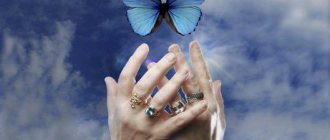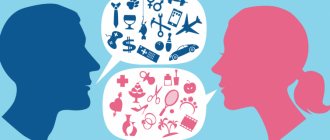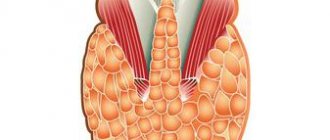Constellation is a complex concept that implies the arrangement and interrelation of certain factors. Here we can talk about coincidence, coincidence, influence, interaction, etc. Typically, constellation is a term used in astrology. However, it has also found application in psychology.
The online magazine psytheater.com identifies several concepts of the term “constellation”, which will be discussed in this article. The usual concept of constellation is the relative arrangement of celestial bodies, which is used in astrology. This knowledge is often used in predicting a person’s future. Depending on the time, date and place of birth, the position of the stars at the moment is considered in order to understand what kind of person will be and what awaits him. Those who believe in such influence earn good money and even live according to the predictions of the stars.
In ecology, a constellation is perceived as the interaction of two or more factors. Every phenomenon, creature, object lives and occurs on its own. However, when they collide and are close together, they influence each other, interact, and form a single whole. The same can be said about a person. It can exist separately from the others. But he still forms a system where he is influenced and where he influences others.
For example, the interaction of air temperature and humidity creates weather. And the appearance of living creatures in one area leads to the appearance of other types of living creatures.
What is a constellation?
Constellation is a multifaceted concept. Let's look at it in more detail. A constellation is a combination of circumstances that can be lucky or unlucky. Often used in science to achieve goals.
How to achieve goals, regardless of current circumstances? After all, many people stop halfway only because they see how life circumstances do not support them in this matter. Noticing difficulties and emerging problems, a person gives up, abandons his goals, as if obeying the voice of circumstances: “Don’t go there!” But how, despite any circumstances, not to give up and still achieve what you want?
Circumstances are not given in order to give up and give up on the goal, but so that you understand that your actions are not appropriate in achieving this particular desire. The same remedy does not always help with different diseases. The same action is not always beneficial in different circumstances. For example, your smile will touch one interlocutor, and irritate another. This does not mean that your smile is good or bad. It's just that one person likes it and another doesn't. And if you want to communicate with both interlocutors, then smile in the presence of one, and do not smile in the presence of the other. That's all.
The same principle applies in any other cases. Circumstances that prevent you from moving towards your goal show you that the actions you are currently taking are unfavorable. Change your actions, start doing some other actions and see the results.
Life circumstances tell you to change your actions to others. And this is no longer an indicator that you need to give up your goal.
How to achieve goals, regardless of current circumstances? The most important thing in this matter is to always keep in mind what you want to achieve. No matter what happens, remember what goal you want to achieve. Try to turn current circumstances to your advantage. Let them either not affect you, or you approach them from such a angle that they will benefit you and help you achieve your goal. The main thing is to remember what you want, spin this thought (picture) in your head and ask yourself: “What can I do now to achieve what I want in the circumstances that currently exist?” Don't stray from your path. See the goal and go straight towards it, no matter the circumstances.
A constellation is a person’s idea of what is happening. Depending on the intensity of the circumstances, their impact, the person’s perception and the desirability of what is happening, one or another attitude towards the situation is formed.
Each person has his own idea of what people should be like and what they are like in real life. Everyone has the same images about themselves. But remember how you feel and behave when your perceptions do not match reality? What desires do you have in this?
Usually, if a person has a certain idea of what his partner should be like, but it does not correspond to the real image, this causes resentment and a desire to change it. You want to see next to you the person you imagine, and not the person you actually communicate with. And due to the fact that a real person may not satisfy you, you may want to “fit” him to your own ideas about him.
But is it right to do this? Is another person obliged to correspond to those ideas that are inherent in you, but not in him? Imagine that someone is trying to change you to suit their ideas. He sees you as a different person, but he doesn’t like you the way you are now. And now he is ready to force you to become the way he sees you, to “fit” you to his own ideas about you. How does this make you feel? Are you ready to be not yourself, but the way they want you to be?
It is a mistake to wish and act so that other people conform to your ideas about them. First of all, you are already being disrespectful and demonstrating a lack of love towards the person you are trying to change. How can you love another person if you don't like him? How can you respect him if you want to change him to suit your ideas about him, and do not appreciate the person he is now?
Secondly, you do not accept the uniqueness of another person, his individual characteristics and differences from those around him and even from your ideas. Undoubtedly, you want the other person to be comfortable for you and to comply with your desires in everything. But if you want to show respect and love for him, then you need to appreciate his personality, the unique qualities and characteristics that are inherent in him and do not coincide with your ideas about him.
Constellation is a reaction, an emotional response to what is happening. It can be automatic or conscious. Change your habitual reactions. You are no longer a child or a school student to continue to react in the same way as you once did. Are you already an adult or are you on your way to becoming one? Then why would you still behave the way you did years ago?
All people come from childhood. Every person was once a child. And in order to survive, preserve himself and go through life’s circumstances, each child chose certain reactions that most protected him from the world around him. But time has passed, the person has already become an adult, and he continues to behave in the same way as if he were still a child.
Change your habitual reactions. You are no longer a child, but an adult who has the right to react in the way that is convenient for you, in the way that is safest for you now, in the way that most benefits you from achieving the goals that you achieve. You no longer need to justify to your parents why you eat potatoes and not buckwheat porridge. You no longer need to do anything to make your neighbors have a good opinion of you. You no longer need to prove your “coolness” to your friends. You are no longer a child or a teenager, but an adult who is free to do whatever he wants, make decisions on his own, answer to no one and be successful only because you achieve the goals you set for yourself.
Change your habitual reactions. You no longer need to be afraid of what you were afraid of as a child. The spider scared you, but now you don’t have to be afraid of it. You used to be afraid of thunderstorms, but now you can ignore it altogether. Change your fears, stop being afraid of what actually cannot harm you. Get rid of your own complexes that were imposed on you by other people, but now you understand that you can, for example, be “beautiful and fat at the same time.” You can be yourself and still achieve the same success as the people you are constantly compared to.
Swap. The very fact that you are not a child, but a free and adult person, suggests that you have the right to choose what kind of life to live, what kind of person to be and to love yourself for who you are. You can get rid of the envy that you once had towards Lyudka, who wore a beautiful dress. You can finally get rid of the fear that “the subway is a dark and negative place.” You can understand that you are worthy of love even when you are fat and kind. All your complexes and fears were formed in childhood, when you were little, when you were surrounded by certain people. But now they are not around? Then why do you continue to behave as if you are still a small child? Even with your parents, you can change your behavior: stop being their son or daughter, behave like an adult and responsible man or woman.
The fact that you have been dragging yourself around for several years is simply preventing you from living fully. You are habitually afraid of something, although in fact you can react differently and get more benefit from the new habit. You still have complexes, although other people do not see in you what you are complex about. What happened before is in the past. And now you live and communicate with new people who can see in you what other acquaintances did not notice before.
Realize that many of your habitual reactions are simply preventing you from living in the present time. Some of them are simply inappropriate, and some of them are not needed at all. And you are still dragging around a bag with various complexes, childhood reactions, fears, etc. Throw it away - and start living for real, the life of an adult, the kind that you only dreamed of, but were afraid to afford it .
go to top
Environmental factors and organisms
Light as an environmental factor
For ecology (Naumov, 1963; Dreux, 1976; Novikov, 1979; Shilov, 2000), qualitative and quantitative signs of light are important:
1. wavelength or color (for the visible spectrum);
2. intensity (actual energy in calories or footcandles);
3. duration of exposure (length of day).
Light waves are ultraviolet, visible (blue, green, red light), and infrared radiation (listed in order of increasing wavelength). In the electromagnetic spectrum, radio waves (Hertzian rays, they are longer than infrared) and radioactive waves (penetrating radiation, waves shorter than ultraviolet) border on light waves. The spectral composition of light varies on the Earth's surface depending on the weather, the reflectivity of the substrate and the density of vegetation. During cloudiness, the intensity of the ultraviolet and infrared spectra decreases to a greater extent. Under a canopy of vegetation (a beech forest is taken as an example), all three forms of radiation are reduced by 5-25 times compared to the sea surface, but the shortest of the infrared waves reach the soil surface to a greater extent than the others. The part of the spectrum visible to the human eye covers the wave range 390-760 nm or 3900-7600 angstroms.
When passing through water, the red and blue parts of the spectrum are filtered out, so greenish light is poorly absorbed by chlorophyll, but well by phycoerythrins (found in deep-sea red algae)
In nature, there is a dual effect of light on organisms - both harmful and beneficial. Therefore, evolution was aimed at using only the beneficial component and protecting against the harmful component or weakening its effect.
The peculiarity of this environmental factor is that it is relatively stable.
Sunlight as an environmental factor acts in the following directions:
1. Ensures plant growth, supplies energy for organic synthesis. In general, light affects plants, animals and microorganisms differently. With the exception of a relatively small number of dark-tolerant forms, plants are able to absorb much more light than is available in nature. Thus, when oak trees were grown for 5 months at a light brightness of 4 thousand lux, they reached a height of more than 2 m. The growth exceeded the norm by 6 times. However, at high light intensity, photo-oxidation of enzymes weakens photosynthesis, especially protein synthesis, which is why in the tropics, for example, it is difficult to obtain high yields of protein-rich crops.
The intensity of light falling on the autotrophic layer controls the entire productivity of the ecosystem. Animals suffer from excess light; for many microorganisms and fungi, light is destructive. Ultraviolet (short-wave penetrating) radiation has a bactericidal, antirachitic, erythema-forming (burn) effect and stimulates the absorption (absorption) of ergosterol (as part of the antirachitic action).
Animals are euryphotic (easily tolerate fluctuations in the quantitative characteristics of light) and stenophotic (deep-sea, cave, nocturnal and twilight animals, as well as soil animals). Desert reptiles also cannot tolerate light irradiation (within 5-10 minutes the body temperature rises to 50R C).
2. Light determines daily (periods of activity) and seasonal photoperiodism (fur development, fat accumulation, migration, hibernation, reproduction);
3. Serves as a source of radiant energy, provides chemical, thermal and
radioactive effects on organisms. Carrier pigeons get confused near powerful radio stations because... they “catch” long waves of earth magnetism for orientation during flights. (The experience accumulated in ontogenesis is also important during flights, so birds fly in flocks of different ages).
4. Light influences the course of ontogenetic and seasonal processes in animals. Provides cyclical maturation of gonads, enhances sexual activity, this is especially important for males. The share of energy received (quantitative signs of light) is often important; therefore, as animals of the same species or even population move north, a longer duration of illumination is required to ensure similar processes (for example, for arthropods when exiting diapause).
Irradiation of sea urchin and insect eggs accelerates development, while over-irradiation destroys the clutch. Pigmentation of the eggs of aquatic animals contributes to their warming. In herring and cod, the neural tube is covered with black pigment (for warming). In fish, the vital organs of the abdominal cavity are covered with a silvery lining - at the same time thermal heating and protection from excess penetrating ultraviolet radiation occurs.
Animals can significantly influence the productivity of photosynthesis. For example, moose eat only 1-2% of the biomass of green vegetation, but due to damage to photosynthetic organs, the productivity of oak forests (Central Chernozem Reserve) drops by almost 50%.
Songbirds capable of reacting to very small amounts of light - some begin to sing at half past two in the morning, for them the “awakening brightness of light” (in Promptov’s terminology) is small.
Insectivorous birds hunt in the depths of the forest or on the edges, depending on the lighting. Flycatchers, warblers, woodpeckers, chickadees and titmice forage for food in the depths of plantings during the day, and in open areas in the morning and evening.
Environmental factors and organisms
1. Rule of optimal environmental factor.
2. The value of the factor dosage for the body.
The quantitative expression of a factor (its dosage) for the body (“the rule of optimum”) is of great importance: “Whatever factor we take (depending on the degree of its severity), we can find a dosage that fits the needs of the body. Regardless of the nature of the organism’s adaptations, be it tolerance or homeostasis, species or individual adaptations, the degree of intensity of adaptive reactions depends on the dosage of the factor,” or, in other words, “certain values of the environmental factor are most favorable” (Ninburg, 2005).
Environmental factors are divided by ecologists depending on nature into abiotic and biotic. Abiotic factors act unilaterally, directionally. In this case, the factor influences, and the body adapts. The impact is of two types: 1) direct (directly on metabolism); 2) sign (information, signal) - example - photoperiod dynamics. With an abiotic effect, there is no reverse effect of the organism on the factor. (Or rather, it exists, but it is carried out at the “supraorganismal” level - the level of population, biocenosis. The group changes salinity, pH, water chemistry, temperature...)
Biotic factors can hardly be called factors in their direct sense. This is a relationship (food-consumer, different individuals within the group). This is a system of relationships that reaches the organismal level. This means that these two groups of factors are not of the same type. When talking about the influence of individual factors on the body, we are talking only about abiotic factors.
So, it is possible to construct a graph reflecting the influence of changes in the quantitative expression of an environmental factor on the vital activity of the organism.
Chart zones:
1) optimum zone - in it all adaptations of the body to the factor are disabled.
2) zones “+2 sigma” and “-2 sigma” - the zone of “reaction norms” - in this zone adaptation mechanisms to this factor are activated.
3) pessimum zones - in this zone the body still survives, but does this due to extreme stress, due, for example, to the suppression of other functions: molting, reproduction, storage of glycogen in the liver.
What should you pay special attention to?
If we give this process an accurate energy estimate, we will see a mirror image of the first curve. The dotted graph shows the amount of energy expenditure used for adaptation. This is a conditional diagram; it is assumed that all other factors operate at their optimum.
By constructing curves for different types of living organisms, we can see under what conditions historically the species adapted to a particular factor.
Let's say we're talking about temperature. Naturally, in the arctic fox, the fox, and the fennec fox, the optimum zones will lie in different places on the OX axis.
Optimum zones for these species (fox, arctic fox, fennec fox) will reflect the history of adaptation of the species to this factor. Moreover, temperature fluctuations in different geographical zones are different, hence the width of the “normal zone” for different types of foxes will be different. Even with the same optimum as another species in absolute value, we can see the following picture: The optima are the same, but the reaction norms (norm zones) are different.
This specificity of organisms is reflected by such terms and concepts as “steno-...” and “eury-...”. These terms characterize not the optimum, but the magnitude of the deviation from it. And the optimum terminologically is “...-phobes.” (More often they say with the ending “…-phil” instead of the corresponding “…-phob”. For example, instead of “thermophobe” they say “cryophile” (“cold lover”).
Constellation of factors
Information about the optimal values of individual factors and the range of tolerated fluctuations characterizes the attitude of the population to the studied factor. However, this situation works in laboratory conditions. In nature, no single factor acts in isolation: a constellation of factors acts. Even a couple of factors acting together already influence each other. Most often, in natural conditions, attention is paid to the combined effect of temperature and humidity and climatograms are built.
Our reactions to cold are different in dry and humid climates. Why? Because moist air conducts heat well, and dry air is a thermal insulator. Therefore, with high humidity it is subjectively colder. The effect of humidity shifts the temperature optimum to the right or left along the graph axis. The wind itself does not affect metabolic processes, but it does affect losses and the removal of heat from the surface of organisms.
At the same high temperature, it is cooler in a dry climate, since the body itself sheds excess moisture through sweating. At high humidity and high temperature (for example, in a bathhouse), evaporation is blocked.
When talking about optimal stations in nature, we do not mean the physiological (shown above) optimum, but the ecological optimum.
Example: impact of snow cover. The snow cover itself does not affect metabolism, but it modifies the influence of the temperature factor, since the microclimate under the snow is significantly different. In the subarctic there live many rodents who, it would seem, cannot endure such harsh conditions - they live under the snow.
In our climate, snow cover is associated with modification of feeding conditions. In winter, there is green grass under the snow, but it is inaccessible to hares and ungulates, although it is accessible to rodents if the snow is loose. Many small birds spend the night under the snow - it is relatively safe. So, the nature of the snow cover “corrects” weather conditions in winter for small animals living under the snow.
Woody vegetation has a similar complex effect in our climate. So, it is “warmer” in the forest than in open areas - trees block the wind. When nesting - forests, shelter belts, separate groups of trees - all these are different climatic conditions. Thus, the bird’s flight from the nest is dictated by the temperature of the eggs, its return is dictated by the ambient temperature, perceived in a complex of conditions - wind, humidity. The wind itself does not affect the nature of the physiological reactions of the body, but it changes the effects of temperature and humidity - this is the so-called modifying factor.
In water, such a factor is flow (it determines the oxygen regime, the conditions for the accumulation of organic sediments, and the possibility of the growth of aquatic plants).
So, in nature, physical factors act in combination, differently than in the laboratory, and the animals themselves in nature are in a different physiological state.
For example, what does a map of a species’ range look like based on acceptable values of temperature, humidity and pressure?
The species' range will be only where the factors are expressed in the normal zone. In addition, the physiological optimum of all factors may not fall into the range zone.
In this case, the “ecological optimum” (area optimum) will be a section of the earth’s surface in which at least the most important factors will be in the most favorable norms for the species. Ecological pessimum is a part of the area with the least successful combination of factors, although some factors may be presented in optimal values.
Conclusion: the ecological optimum does not correspond to the physiological optimum. Therefore, from an ecological point of view, it is illiterate to say “the arctic fox lives in extreme arctic conditions” or “fennec fox lives in extreme desert conditions.” This is anthropomorphism: for the arctic fox, Arctic conditions are optimal, not extreme.
Temperature as a factor in animal habitat
Naumov N.P. (1963) notes the following types of adaptive behavior of animals, in connection with the effect of temperature as an environmental factor:
1. Moving to places with more favorable temperatures.
The search for a favorable temperature is based on thermokinesis (non-oriented increases in the mobility of an animal in a zone of unfavorable temperature) and thermotaxis (movement towards a more favorable temperature). The study is carried out in a thermogradient device (invented by K. Herter in 1929 and improved by N. I. Kalabukhov in 1951). The thermotactic (substrate) and thermal (medium) optimum is determined. The optimum changes in different seasons of the year, when eating different foods and due to weather changes. Homeothermic small animals, younger individuals, as well as inhabitants of southern latitudes, choose higher temperatures compared to larger, older and northern individuals and populations. In an active state, animals choose a lower temperature than at rest.
In poikilotherms (Greek “poikilos” - variegated, varied), what matters is the previously achieved adaptation to a particular temperature within the temperature zone of the active state. Therefore, insects die during sudden temperature changes.
Spawning migrations of fish are directed not only by water chemistry, but also by temperature. In March and April, the herring of the Kiel Bay go to spawn at the mouth of the river. Shiley, where the water is 1.5 degrees higher. Their return to the bay occurs at a time when the water there is warmer than in the river. The periodic increase in the pressure of the Gulf Stream and the resulting warming of spring and summer, consistently spreading across northern Europe to the east, is accompanied by the massive appearance of Norwegian and Ob lemmings (erroneously called “invasions”).
2. Change of periods of rest and activity in the daily and seasonal rhythm of activity. Reproduction time is observed to coincide with optimal temperatures in combination with the optimal amount of food. Mass deaths of small animals and birds in winter are caused not so much by the harsh climate as by crop failure or the unavailability of basic feed.
3. Special habits.
Birds save eggs from overheating by direct insolation - they stand over the nest, like an umbrella. Periodic takeoffs for cooling are made by birds and insects. On hot days, pelicans go from their nests into the water to wet their eggs and cool down by drying them.
4. Use of existing and construction of shelters with a favorable microclimate.
Constellation in psychology
Other meanings of constellation in psychology are:
- The system in which a person finds himself, which leads to certain results.
- An arrangement method in which a person is able to look at the conditions in which he is trying to live and achieve what he wants.
- The variety of subpersonalities that make up one person. The need to play several roles in different situations forces a person to be different, different from himself.
- The influence of one object on another, and vice versa.
go to top










